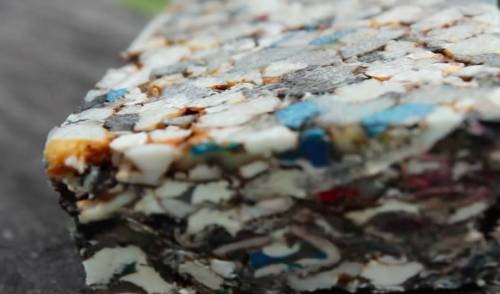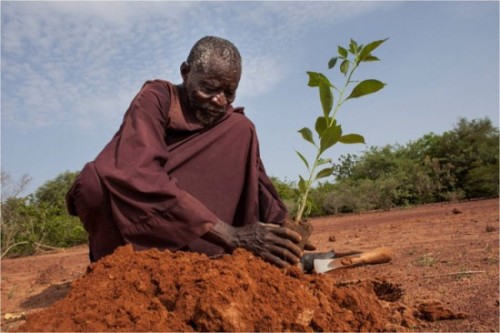I Just Came Across Molly Costello’s Art, And It’s So Incredibly Solarpunk! It’s So Gorgeous And










I just came across Molly Costello’s art, and it’s so incredibly solarpunk! It’s so gorgeous and hopeful and wonderfully nature-inspired and I love everything about it.
More Posts from Copperfingertips and Others

~ the pondering muse🌙
I know I’ve written about this a lot in the past month but this article has some new tidbits about mushroom’s beneficial effects on soil remediation. Apparently, not only can mushrooms break down plastics, radioactivity, generate electricity, and a plethora of other things. But it can also remove pesticides, dyes, remnants of explosives in the soil, and act as a stimulant for biofuel conversion! Pretty interesting stuff isn’t it?
Basil, How To Grow More Than You Can Eat - Gardening at 58 North
~~~
Things I learned today #6
You can buy a single basil plant for around $5 or less, and take cuttings forever. Basil is an amazing plant and can be used for a lot of things! Including pesto, which you can make at home with a morter and pestal! (https://youtu.be/6-dOZezSwwM)
For every ‘dystopian/post-apocalyptic story that has people still surviving from scavenging and canned foods and no farms, no mentions of building a community nor an attempt at rebuilding a society 10+ years after THE END’ owe me $5.

I’ve been thinking about places to live, in the desert and in generally hotter climate, and the idea of underground houses seemed like a good one. For now, here is a stairwell leading down to such a house, complete with tiny greenhouse. It has translucent solar panels as glass, which still let the red light through that plants need most.



This startup is turning plastic waste into affordable housing
The company called Eco Domum, or Eco Home, is based in Puebla, Mexico. Founder Carlos Daniel González collects, sorts and melts down non-toxic plastics into a liquid, according to Unreasonable. That sludge is then put into a hydraulic press, which forms the plastic into hardened panels. It takes two tons of plastic to make one house. At scale, González’s plastic houses could be just what Mexico needs.
Follow @the-future-now
when the capitalists die out either thru global warming or revolution will we be able to start homegrown internet




Yacouba Sawadogo is an exceptional man – he single-handedly managed to solve a crisis that many scientists and development organizations could not. The simple old farmer’s re-forestation and soil conservation techniques are so effective they’ve helped turn the tide in the fight against the desertification of the harsh lands in northern Burkina Faso.
Over-farming, over-grazing and over population have, over the years, resulted in heavy soil erosion and drying in this landlocked West African nation. Although national and international researchers tried to fix the grave situation, it really didn’t really make much of a difference. Until Yacouba decided to take matters into his own hands in 1980.
Yacouba’s methods were so odd that his fellow farmers ridiculed him. But when his techniques successfully regenerated the forest, they were forced to sit up and take notice. Yacouba revived an ancient African farming practice called ‘zai’, which led to forest growth and increased soil quality.
(Fact Source) Follow Ultrafacts for more facts



Printed Solar Bio-Batteries
Led by biotechnologist Marin Sawa, a group of researchers at Imperial College London have devised a way to print solar cells onto paper. They use an inkjet printer to place a conductive layer of carbon nanotubes and a layer of living cyanobacteria to create devices which can capture and store solar energy.
In their proof-of-concept experiment, the cyanobacteria survived the printing process and were able to produce energy from photosynthesis. The trial panel was palm sized and gave enough energy to power a small LED light. Even better, being little more than paper, carbon, and bacteria, the bio-cells are fully biodegradable.
The work is part of an emerging field of science called microbial biophotovoltaics (presumably related to the biovoltaics I’ve mentioned here before) which uses algae and cyanobacteria to generate energy. The energy generated may be small, but it’s also cheap and easy to manufacture, and the microbes can continue generating electricity after dark, using compounds made during daylight.
The bio-batteries aren’t intended to replace standard photovoltaics for large scale energy production. Instead, they can provide an inexpensive and renewable source of energy for specific uses, such as air quality monitors and healthcare applications.
“Imagine a paper-based, disposable environmental sensor disguised as wallpaper, which could monitor air quality in the home. When it has done its job it could be removed and left to biodegrade in the garden without any impact on the environment.” – Marin Sawa
Sawa et al (2017) – open access
-
 thepeaceofwildthings reblogged this · 1 month ago
thepeaceofwildthings reblogged this · 1 month ago -
 tryg-n-tyra liked this · 5 months ago
tryg-n-tyra liked this · 5 months ago -
 iamdependent reblogged this · 10 months ago
iamdependent reblogged this · 10 months ago -
 iamdependent liked this · 10 months ago
iamdependent liked this · 10 months ago -
 bumblebeeappletree reblogged this · 10 months ago
bumblebeeappletree reblogged this · 10 months ago -
 snakeoiliscuringme liked this · 10 months ago
snakeoiliscuringme liked this · 10 months ago -
 solhaelan reblogged this · 10 months ago
solhaelan reblogged this · 10 months ago -
 you-beat-that-username liked this · 10 months ago
you-beat-that-username liked this · 10 months ago -
 lycanthropus liked this · 10 months ago
lycanthropus liked this · 10 months ago -
 tallwriter reblogged this · 10 months ago
tallwriter reblogged this · 10 months ago -
 hermitbug-reblog reblogged this · 10 months ago
hermitbug-reblog reblogged this · 10 months ago -
 tumblingxelian reblogged this · 10 months ago
tumblingxelian reblogged this · 10 months ago -
 tumblingxelian liked this · 10 months ago
tumblingxelian liked this · 10 months ago -
 jediofbooksandsnacks liked this · 10 months ago
jediofbooksandsnacks liked this · 10 months ago -
 albucabracteata liked this · 10 months ago
albucabracteata liked this · 10 months ago -
 illegal-cranberries liked this · 10 months ago
illegal-cranberries liked this · 10 months ago -
 cheesy-pot8os reblogged this · 10 months ago
cheesy-pot8os reblogged this · 10 months ago -
 cheesy-pot8os liked this · 10 months ago
cheesy-pot8os liked this · 10 months ago -
 aspiringwarriorlibrarian reblogged this · 10 months ago
aspiringwarriorlibrarian reblogged this · 10 months ago -
 sweet-lemon-slice reblogged this · 10 months ago
sweet-lemon-slice reblogged this · 10 months ago -
 twunkish-cleric liked this · 10 months ago
twunkish-cleric liked this · 10 months ago -
 stardew-bajablast reblogged this · 10 months ago
stardew-bajablast reblogged this · 10 months ago -
 solarpunkaestheticweek reblogged this · 10 months ago
solarpunkaestheticweek reblogged this · 10 months ago -
 self-mythologist liked this · 11 months ago
self-mythologist liked this · 11 months ago -
 self-mythologist reblogged this · 11 months ago
self-mythologist reblogged this · 11 months ago -
 pissodeluxe reblogged this · 11 months ago
pissodeluxe reblogged this · 11 months ago -
 pepercress liked this · 1 year ago
pepercress liked this · 1 year ago -
 itcantgetpossiblyworst liked this · 1 year ago
itcantgetpossiblyworst liked this · 1 year ago -
 black-catz-luck liked this · 1 year ago
black-catz-luck liked this · 1 year ago -
 specializationisforinsects reblogged this · 2 years ago
specializationisforinsects reblogged this · 2 years ago -
 specializationisforinsects liked this · 2 years ago
specializationisforinsects liked this · 2 years ago -
 everlocked reblogged this · 2 years ago
everlocked reblogged this · 2 years ago -
 obsessivespellcheck liked this · 2 years ago
obsessivespellcheck liked this · 2 years ago -
 hopefulsolarpunk reblogged this · 2 years ago
hopefulsolarpunk reblogged this · 2 years ago -
 sleepingwool liked this · 2 years ago
sleepingwool liked this · 2 years ago -
 toiletluigi liked this · 3 years ago
toiletluigi liked this · 3 years ago -
 mays-corner liked this · 3 years ago
mays-corner liked this · 3 years ago -
 nerdsgaysandarcherybabes liked this · 3 years ago
nerdsgaysandarcherybabes liked this · 3 years ago -
 hellish6 liked this · 3 years ago
hellish6 liked this · 3 years ago -
 love-and-be-loved liked this · 3 years ago
love-and-be-loved liked this · 3 years ago -
 energynotfound liked this · 3 years ago
energynotfound liked this · 3 years ago -
 7thgenscot reblogged this · 3 years ago
7thgenscot reblogged this · 3 years ago -
 7thgenscot liked this · 3 years ago
7thgenscot liked this · 3 years ago -
 ssolson8550 reblogged this · 3 years ago
ssolson8550 reblogged this · 3 years ago -
 ssolson8550 liked this · 3 years ago
ssolson8550 liked this · 3 years ago -
 worldleaderpretend1969 reblogged this · 3 years ago
worldleaderpretend1969 reblogged this · 3 years ago -
 sugarforsalt liked this · 3 years ago
sugarforsalt liked this · 3 years ago




